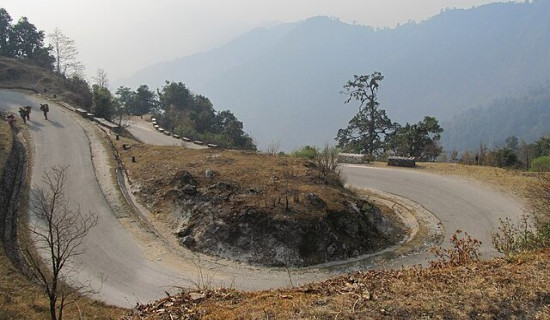- Friday, 3 October 2025
Restriction On Drones
Flying unmanned flying vehicles (UFVs) or remotely piloted aircraft (RPA) for varied reasons has become a prominent activity of contemporary times. Some use it for fun, while others use such vehicles to acquire aerial images of landscapes, buildings and people. It helps some individuals collect holiday experiences, conduct study and researches, among other things. The specifically manufactured drones are widely employed in sports and entertainment. They are also utilised for maintaining surveillance over specified locations and monitoring people’s actions for security purposes. In contemporary warfare, remotely piloted drones have become a significant entity capable of performing surveillance over hostile regions and delivering explosives and warheads. These cases inform us that drones are significant as well as harmful objects that may be employed for diverse objectives as per necessity.
In the meantime, flying drones for personal enjoyment in urban areas of Kathmandu has also taken place lately, posing a risk to the aircraft as well as breaches of individuals’ privacy. Drones and remotely controlled flying devices might be harmful if they are not supervised properly. Some of them pose actual security dangers for a country since they may be flown over critical locations that need protection by the nation’s security officers. People have a propensity to participate in amusing activities by flying drones in metropolitan areas, but they may also fly them over military or other sensitive zones, which frequently places these highly sensitive locations under danger of different types. These are the key factors that have pushed our authorities to conduct regulatory work to govern the flying of drones, UFVs, or RPAs.
Irked by the increasing trend of haphazard and personal use of drones, which is illegal according to the Working Procedure 2018 for flying drones, the Ministry of Home Affairs has advised all drone operators to get approval from the concerned district administration office. It is now required to request for authorisation from the appropriate administration office to fly a drone up to two kilogrammes, and for weights beyond 25 kilogrammes, a compulsory permit should be acquired from the ministry. Tourists who intend to fly a drone in the national parks and conservation areas of Nepal require authorisation from the responsible conservation area authority or national park, the Ministry of Home Affairs, the Department of Tourism, and the Civil Aviation Authority of Nepal. The authorities have also confiscated roughly 20 drones that were flown without license. The government has also barred flying drones higher than 120 metres (394 feet) and more than 500 metres (1,640 feet) from anything.
Flying a drone within 50 metres (164 feet) of any ship, transit, or building is also forbidden. Drones have been classed according to their weight and design for which specified certificate of approval must be obtained. The certificate will be valid for a period of one year, which may be extended by a maximum of three months. As things have turned out now, drone or UFV flying without an authorisation is strictly prohibited and consequently punished in the country. Such a restriction looks reasonable on the part of our authorities since drones in current times have become sensitive devices which a rogue might use to hurt security of an area or a country. However, a person, who wants to fly these items must adhere to the government’s limitation. They might enjoy drone-flying pastime by confining themselves within the permission granted by authorities.

.jpg)














